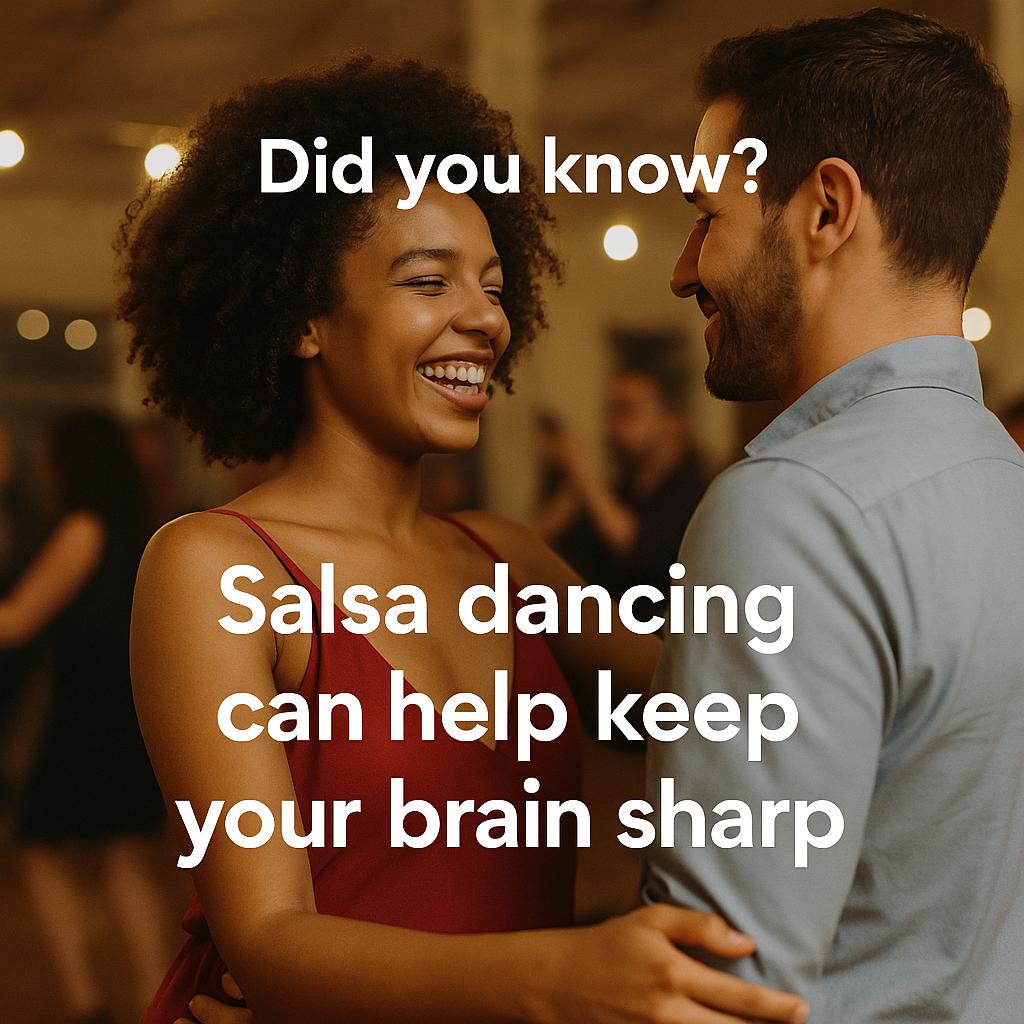
If you dance salsa regularly, you’re not just having fun—you might also be giving your brain a boost. Salsa combines rhythmic music, complex footwork, partner coordination, and social interaction, which together challenge memory, attention, and multitasking skills. This dynamic engagement promotes neuroplasticity, helping build and maintain neural connections in areas responsible for memory, executive function, and spatial awareness.
In fact, studies among older adults—including culturally tailored Latin dance programs like the BAILAMOS® initiative—have shown significant improvements in working memory and global cognitive function compared to non‑dancing control groups. These benefits were seen even after several months of classes combining salsa, merengue, bachata, and cha‑cha.
Meta‑analyses looking at various dance interventions in people aged 55 + also found measurable gains in memory, executive function, language, attention, and overall cognitive health—especially when dance took place at least three times per week over 12 weeks or more.
So next time you hit the salsa floor, remember: you’re working your brain as much as your feet. Whether you’re learning nuevas moves or rehearsing old patterns, every step is workout for your mind—plus it’s a whole lot of fun!